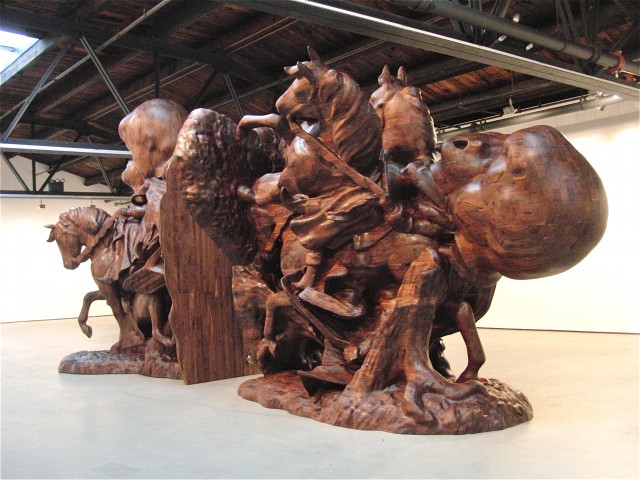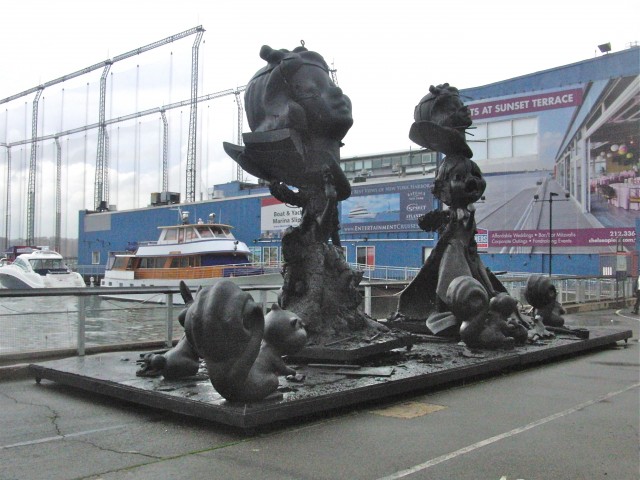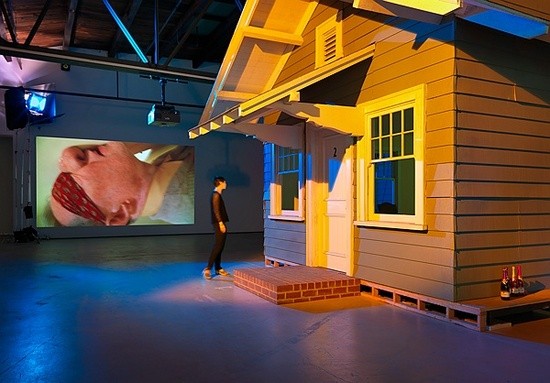
Paul McCarthy and Damon McCarthy’s “Rebel Dabble Rabble” multimedia installation goes behind the scenes of the making of an American myth (photo courtesy Hauser & Wirth)
Paul McCarthy and Damon McCarthy: Rebel Dabble Babble, Hauser & Wirth, 511 West 18th St., Monday – Friday through July 26, free
Paul McCarthy and Damon McCarthy: WS, Park Avenue Armory, 643 Park Ave., through August 4, $15
Paul McCarthy: Life Cast, Hauser & Wirth, 32 East 69th St., Monday – Friday through July 26, free
LA-based artist and provocateur Paul McCarthy takes a giant dump and smears it all over the Wonderful World of Disney, Hollywood, and American mythology in a pair of shows that are most definitely not for children or the faint of heart. Hauser & Wirth continues their spring/summer of McCarthy with “Rebel Dabble Babble,” the follow-up to his earlier indoor “Sculptures” and outdoor “Sisters” exhibitions. Asked by James Franco to participate in a show he was curating about Nicholas Ray’s iconic 1954 film Rebel without a Cause, McCarthy, teaming with his son, Damon, instead developed the related installation “Rebel Dabble Babble,” which McCarthy describes as “Art as a dangling participle.” The multimedia presentation, spread throughout Hauser & Wirth’s vast Eighteenth St. space, consists of carefully constructed re-creations of the staircase in the Stark house from Ray’s film and the Chateau Marmont bungalow where the director and his stars might or might not have become involved in some very heavy debauchery. On those intricately designed sets, the McCarthys used multiple cameras to capture lurid craziness as actors portraying James Dean, Natalie Wood, and Sal Mineo, as well as their Rebel characters, Jim Stark, Judy, and Plato, get involved in raunchy festishistic sexual rituals and surreal going-on in which the act of filming is part of the narrative. The central cast features Franco as Jim/James, Elyse Poppers as Judy/Natalie, and Jay Yi as Plato/Sal, with a bulbous-nosed Paul McCarthy playing Jim’s father and Ray and Suzan Averitt as Jim’s mother and Natalie’s mother. The doubling theme goes a step further when things get rather hot, including nudity, intense sexuality, and various forms of actual penetration; in true Hollywood form, the McCarthys bring in body doubles, including real porn stars, to perform these acts. The multichannel films are projected onto the walls of the gallery, each scene shot from multiple angles, overwhelming the viewer as anger, repression, obsession, voyeurism, brutality, incest, and more take center stage. At the top of the Stark stairs in a small bedroom, a video depicts Poppers begging visitors to pleasure her, while her double graphically pleasures herself in another gallery space. In the back room, hundreds of photos detail the goings-on, showing you what you might have missed — which could be good or bad, depending on your own limits and desires. The films are purposely amateurish, revealing the foibles of the medium, especially in an age in which anyone can make a movie and put it on the internet.
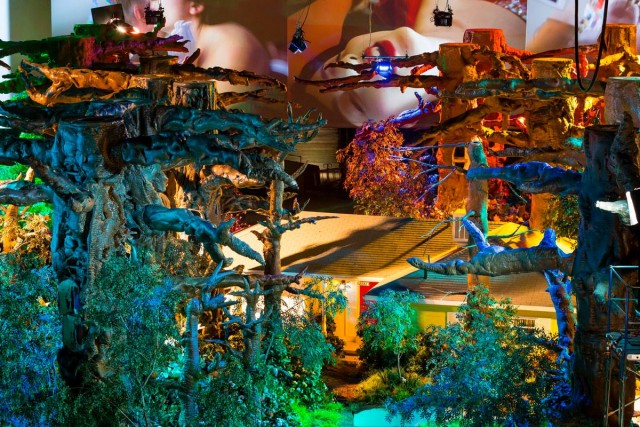
Paul McCarthy offers a unique take on the classic Show White fairy tale at the Park Ave. Armory (photo by James Ewing)
At the Park Ave. Armory, the McCarthys have installed the impressively ambitious “WS,” continuing their exploration of American mythology as seen through the lens of Walt Paul, the artist’s alter ego, a bizarre combination of Walt Disney and Paul McCarthy. In “WS,” which stands for “White Snow,” McCarthy again uses the theme of doubling as he tells a decidedly adult version of the story of Snow White and the seven dwarfs, combining the Brothers Grimm tale with the 1937 Disney animated movie, adding in elements of debauchery and pornography that are far from family friendly. (No one under eighteen is allowed in, even with a parent or guardian.) “Desire device / Dream device / Pretend device,” McCarthy writes in a poem in the exhibition program, and he investigates those three concepts and many more in an immersive installation that includes a forest, huge multichannel screens, a series of small rooms that are like peep shows, and a three-quarters scale model of the house he grew up in. Evoking the child’s journey into adulthood, “WS” consists of some twenty hours of films, with the main footage in the vast hall more or less following the general narrative of the Disney movie, albeit with sex, nudity, feces smearing, alcohol-fueled orgies, nine dwarfs (Humpey and Too Happy have been added) and three White Snows (Elyse Poppers, Aiden Ashley, Charlotte Stokely) in addition to a fourth, Real Doll White Snow who gets in on the festivities as well. McCarthy plays Walt Paul, who ends up in several rather uncomfortable positions. Visitors experience the bacchanalia by peering into windows and cut-out holes in the walls of the house where the sensationalistic proceedings occurred, ambling through the woods, climbing stairs, and wandering through nearly private screenings of a bizarre cooking show, an alternative Adam and Eve, a drinking party, White Snow performing fellatio on a microphone, and the prince pulling his pud. All of the characters have ridiculous, bulbous noses, mocking the idea of Hollywood’s ability to transform reality through makeup and other forms of fakery. The piece is supplemented by display cases that mimic Snow White’s glass coffin, a gift shop that sells Disney merchandise signed by Walt Paul, and a video interview with Paul, Damon, cocurator Hans-Ulrich Obrist, and consultant Tom Eccles.
At first it might seem that Paul McCarthy’s “Life Cast” has little to do with “WS” and “Rebel Dabble Rabble,” but it turns out that in many ways it is central to the Salt Lake City-born artist’s current installations, which he refers to as works in progress. The exhibition, on view at Hauser & Wirth’s 69th St. space, features a quartet of remarkably lifelike casts of Elyse Poppers, who plays one of the Snow Whites in “WS” and Natalie Wood / Judy in “Rebel Dabble Babble.” Visitors are initially greeted by “That Girl: T.G. Asleep,” in which the Poppers figure, made out of silicone, paint, and hair, is lying on her back, completely naked. It’s impossible not to look for signs of life — the blink of an eye, a slightly rising chest— even though she’s not real. Indeed, the next part of the show, “T.G. Awake,” consists of three more versions of Poppers, this time sitting up, resting on her hands, eyes wide open. The title is a direct reference to the classic television sitcom That Girl, in which Marlo Thomas played an independently minded wannabe actress living in New York City. In the back room, McCarthy has made a cast of himself (“Horizontal”), his older, heavy, hairier body — kind of an anti-Sleeping Beauty — not nearly as attractive as Poppers’s, appearing more dead than asleep. In both “W.S.” and “Rebel Dabble Babble,” McCarthy reveals some of the tricks of the trade, sometimes showing the camera and microphone, not hiding certain elements that went into the creation of his crazed works; similarly, “Life Cast” includes an upstairs room where a pair of multichannel videos, “T.G. Elyse,” reveal in exacting detail how two of the Poppers figures were made, a tediously slow process that resulted in strikingly realistic sculptures that offer a sharp counterpoint to the wildly fantastical creatures and situations of “W.S.” and “RDB.” Taken together, the three shows continue McCarthy’s decades-long, often controversial exploration of American mythology and consumerism, social interaction, and pop culture touchstones in ways that are not always pretty but are entertaining as hell.
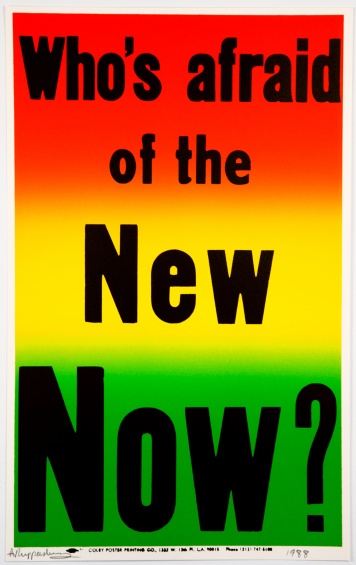
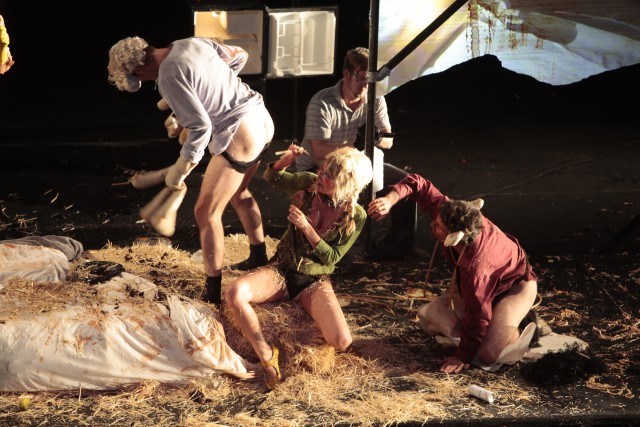
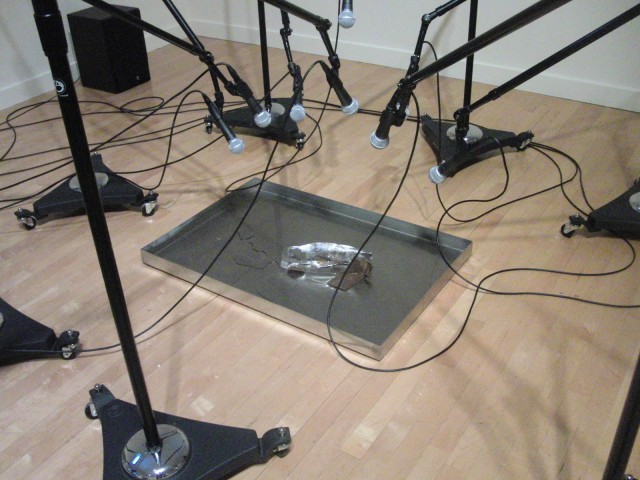
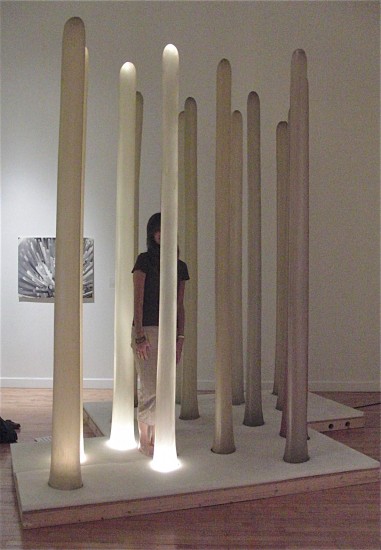


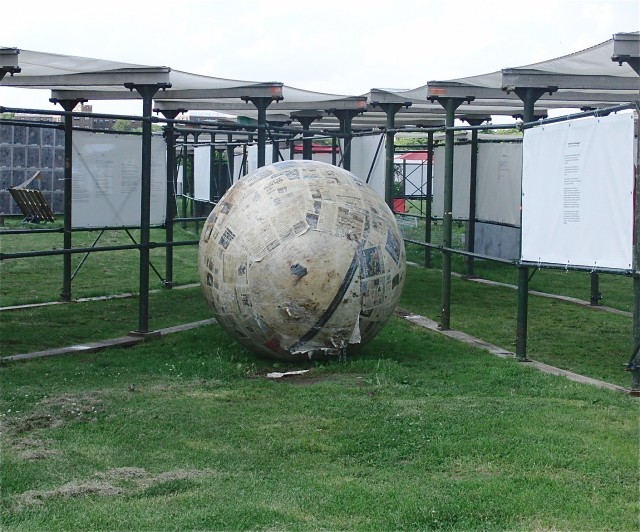
![Grayson Revoir followed Darren Bader instructions to “glue a [rectangular] table to the sky [table top up, somewhere not too close to the sky’s zenith]” (photo by twi-ny/mdr)](https://twi-ny.com/wp-content/uploads/2013/07/do-it-2-e1373117804585.jpg)
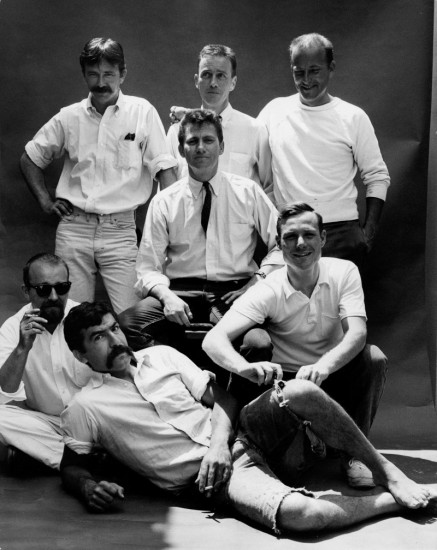
 While postwar modern art was exploding in New York in the 1950s, a small, close-knit group of artists were coming together in Los Angeles, exploring abstract expressionism in a tiny gallery called Ferus. Mixing archival footage with new interviews — shot in black and white to maintain the old-time, DIY feel — director Morgan Neville delves into the fascinating world of the L.A. art scene as seen through the Ferus Gallery, which was founded in 1957 by Walter Hopps, a medical-school dropout who looked and acted like a Fed, and assemblage artist Ed Kienholz. “The work was really special,” notes Dennis Hopper, enjoying a cigar with Dean Stockwell. “And there [were] a lot of really, really gifted artists that really have to be looked at again.” Among those artists were Wallace Berman, Ed Moses, Ed Ruscha, Robert Irwin, Craig Kauffman, John Baldessari, and Larry Bell. (All of them participate in the documentary except for Berman, who died in 1976.) In addition to featuring up-and-coming West Coast painters, sculptors, and conceptual artists, Ferus also hosted a Marcel Duchamp retrospective as well as early shows by Andy Warhol, Roy Lichtenstein, Jasper Johns, and other East Coast favorites. For nearly ten years, Hopps, Kienholz, and crafty businessman Irwin Blum kept Ferus going until various personality clashes led to its demise. The film includes an engaging roundtable from 2004 in which Neville brought many of the artists together to discuss what Ferus meant to them — and the art world in general. Behind a jazzy score, Neville also speaks with collectors, curators, and critics, putting it all into perspective. The Cool School, narrated by actor and photographer Jeff Bridges, is a fun-filled trip through a heretofore little-known part of postwar American art. The film is screening June 23 at 11:15 am as part of the Nitehawk Cinema’s monthly series “Art Seen” along with Paul McCarthy’s The Black and White Tapes, artist works by Kelly Kleinschrodt and Alexa Garrity, and Henry Joost and Ariel Schulman’s brilliant video bio A Brief History of John Baldessari, narrated by Tom Waits. The series continues July 20-21 with Neil Berkeley’s Beauty Is Embarrassing.
While postwar modern art was exploding in New York in the 1950s, a small, close-knit group of artists were coming together in Los Angeles, exploring abstract expressionism in a tiny gallery called Ferus. Mixing archival footage with new interviews — shot in black and white to maintain the old-time, DIY feel — director Morgan Neville delves into the fascinating world of the L.A. art scene as seen through the Ferus Gallery, which was founded in 1957 by Walter Hopps, a medical-school dropout who looked and acted like a Fed, and assemblage artist Ed Kienholz. “The work was really special,” notes Dennis Hopper, enjoying a cigar with Dean Stockwell. “And there [were] a lot of really, really gifted artists that really have to be looked at again.” Among those artists were Wallace Berman, Ed Moses, Ed Ruscha, Robert Irwin, Craig Kauffman, John Baldessari, and Larry Bell. (All of them participate in the documentary except for Berman, who died in 1976.) In addition to featuring up-and-coming West Coast painters, sculptors, and conceptual artists, Ferus also hosted a Marcel Duchamp retrospective as well as early shows by Andy Warhol, Roy Lichtenstein, Jasper Johns, and other East Coast favorites. For nearly ten years, Hopps, Kienholz, and crafty businessman Irwin Blum kept Ferus going until various personality clashes led to its demise. The film includes an engaging roundtable from 2004 in which Neville brought many of the artists together to discuss what Ferus meant to them — and the art world in general. Behind a jazzy score, Neville also speaks with collectors, curators, and critics, putting it all into perspective. The Cool School, narrated by actor and photographer Jeff Bridges, is a fun-filled trip through a heretofore little-known part of postwar American art. The film is screening June 23 at 11:15 am as part of the Nitehawk Cinema’s monthly series “Art Seen” along with Paul McCarthy’s The Black and White Tapes, artist works by Kelly Kleinschrodt and Alexa Garrity, and Henry Joost and Ariel Schulman’s brilliant video bio A Brief History of John Baldessari, narrated by Tom Waits. The series continues July 20-21 with Neil Berkeley’s Beauty Is Embarrassing.